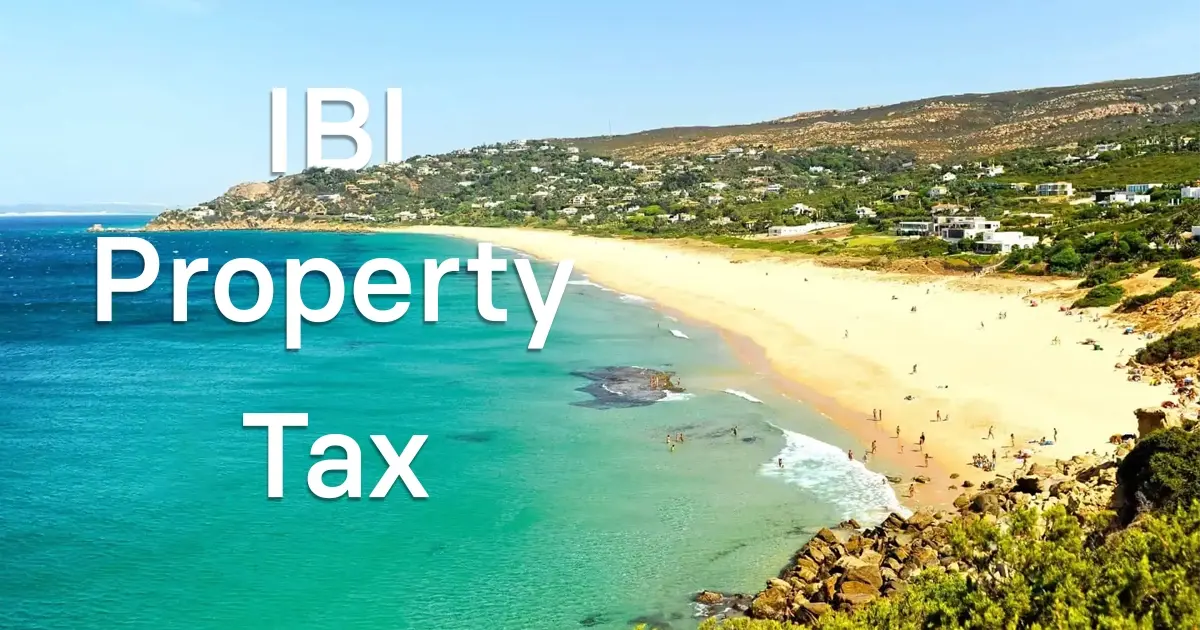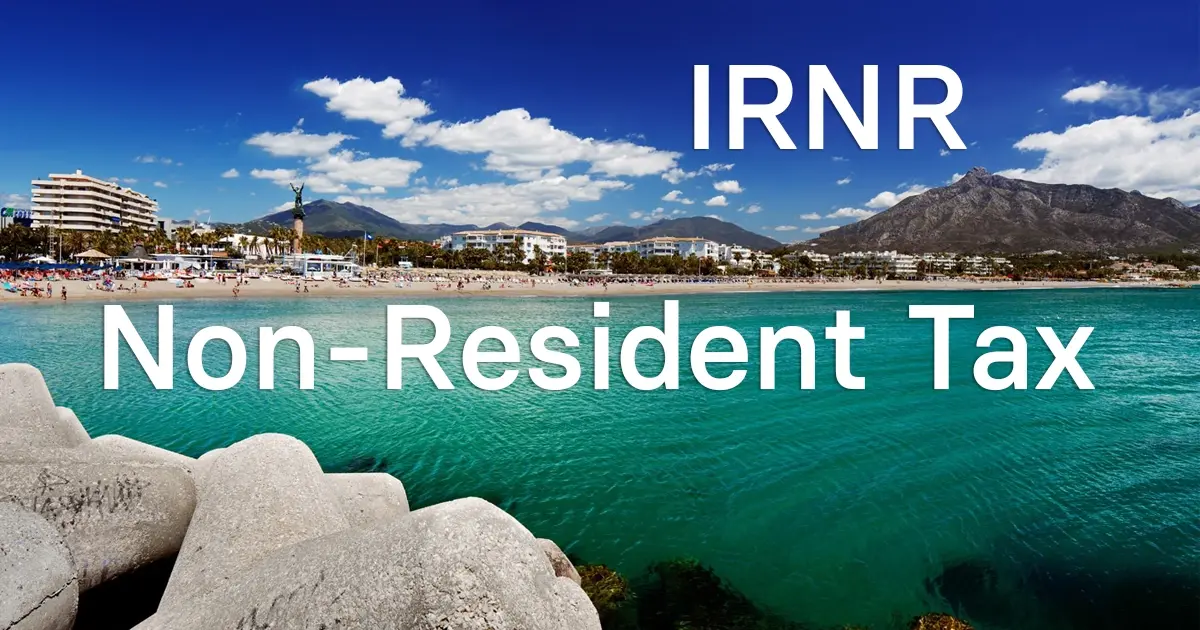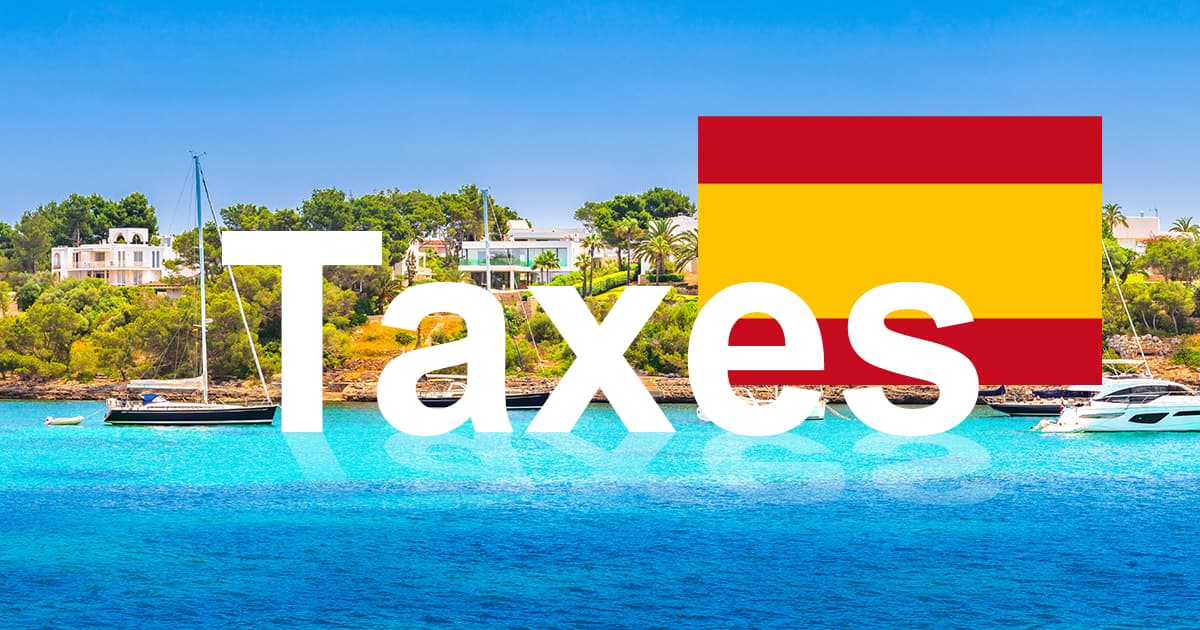
Real Estate Taxes in Spain: What Every Foreign Buyer Should Know in 2025
Last update: September 3, 2025
Reading time: 17.5 min
No Time to Read It All? Here’s the Quick Summary:
Tax differences between Spain’s regions can significantly impact your total purchase cost. For example, Madrid applies a reduced 6% ITP on resale properties and 0.75% AJD on new builds, making it one of the most affordable regions for buyers. In contrast, Catalonia and Valencia apply higher flat rates — 10% ITP and 1.5% AJD — which can increase upfront costs by thousands of euros. These differences are particularly relevant for foreign buyers targeting popular areas along the Mediterranean coast, where tax burdens are often heavier. Always factor in regional rates when calculating your total budget and consider seeking local tax advice to benefit from potential exemptions.
Why You Must Understand Spanish Property Taxes
Buying property in Spain can be a dream come true — whether it’s a vacation apartment by the sea or a long-term investment. But many foreign buyers underestimate the true cost of owning property in Spain, particularly when it comes to tax obligations.
Unlike in some countries where taxes are consolidated or handled automatically, Spain’s real estate tax system is fragmented, region-specific, and often misunderstood by international buyers. Overlooking these taxes can lead to unexpected expenses, delays in the purchasing process, or even fines later on.
This guide gives you a complete overview of real estate taxes in Spain in 2025, helping you plan ahead and avoid costly surprises. We break down the most important taxes you’ll need to account for at each stage of the ownership cycle:
- At the time of purchase:
➤ Property Transfer Tax (ITP) for resale properties
➤ Value-Added Tax (VAT / IVA) and Stamp Duty (AJD) for new builds
- While you own the property:
➤ Local Property Tax (IBI) — charged annually by your municipality
➤ Non-Resident Income Tax (IRNR) — even if your property isn’t rented - When selling your property:
➤ Municipal Capital Gains Tax (Plusvalía)
➤ State-level Capital Gains Tax (IRPF or IRNR, depending on your status)
Throughout this article, we’ll also highlight how taxes vary by region, what documents you need, and when to seek legal or fiscal advice. You’ll find example calculations, case studies, and comparison tables to help you understand what’s really involved.
Want a fast way to estimate your tax burden?
Taxes at the Time of Purchase: What to Expect Upfront
When buying real estate in Spain, the purchase price is only part of the cost. Depending on whether you’re buying a resale or a new-build property, different taxes and fees apply — and these can add between 10% and 15% to the final bill. Knowing what to expect in advance helps you budget more accurately and avoid unexpected financial stress.
For Resale Properties
When you purchase a second-hand property from a private individual, the main tax you’ll pay is the Property Transfer Tax (ITP – Impuesto sobre Transmisiones Patrimoniales). This is a regional tax, and the rate varies between 6% and 10% depending on where the property is located.
In addition to ITP, you’ll need to cover:
- Notary fees (typically 0.5% – 1% of the purchase price)
- Land registry fees (around 0.4% – 0.7%)
- Legal fees (1% – 2%, optional but strongly recommended)
In most transactions, the buyer is responsible for these costs. The seller covers their own capital gains taxes and municipal taxes such as the plusvalía.
-
Example:
If you buy a €250,000 resale apartment in Valencia, where the ITP is 10%, your estimated additional costs might look like this:
| Item | Estimated Cost |
|---|---|
| ITP (10%) | €25,000 |
| Notary + Registry | €1,500 – €2,000 |
| Legal fees (1.5%) | €3,750 |
| Total extra cost | ~€30,000 |
Estimated Cost : €25,000
Estimated Cost : €1,500 – €2,000
Estimated Cost : €3,750
Estimated Cost : ~€30,000
Source : Agencia Tributaria
For New-Build Properties
When buying directly from a developer, resale taxes do not apply. Instead, you’ll pay:
- VAT (IVA – Impuesto sobre el Valor Añadido):
A national tax, usually 10% for residential properties - Stamp Duty (AJD – Actos Jurídicos Documentados):
A regional tax, typically 0.5% to 1.5% of the property price
Additional expenses include:
- Notary and registry fees (0.9% – 1.7% combined)
- Legal fees (1% – 2%)
Canary Islands exception: Instead of VAT, properties there are subject to IGIC (Impuesto General Indirecto Canario), which is 7%.
Example:
If you’re buying a €300,000 new-build property in Málaga, where AJD is 1.2%, here’s what the costs might look like:
| Item | Estimated Cost |
|---|---|
| VAT (10%) | €30,000 |
| AJD (1.2%) | €3,600 |
| Notary + Registry | €2,000 – €2,500 |
| Legal Fees (1.5%) | €4,500 |
| Total Extra Costs | ~€40,000 |
Estimated Cost : €30,000
Estimated Cost : €3,600
Estimated Cost : €2,000 – €2,500
Estimated Cost : €4,500
Estimated Cost : ~€40,000
Source : Agencia Tributaria
Summary Table: Total Estimated Costs
Let’s compare the estimated purchase costs for a resale vs new-build property in Spain:
| Cost Category | Resale (€250K) | New-Build (€300K) |
|---|---|---|
| Main tax | ITP (10%): €25,000 | VAT (10%): €30,000 |
| Stamp duty (AJD) | – | AJD (1.2%): €3,600 |
| Notary & Registry | €1,500 – €2,000 | €2,000 – €2,500 |
| Legal Fees | €3,750 | €4,500 |
| Total Costs | ~€30,000 | ~€40,000 |
| % of Price | ~12% | ~13% |
Resale: ITP (10%): €25,000
New-Build: VAT (10%): €30,000
Resale: –
New-Build: AJD (1.2%): €3,600
Resale: €1,500 – €2,000
New-Build: €2,000 – €2,500
Resale: €3,750
New-Build: €4,500
Resale: ~€30,000
New-Build: ~€40,000
Resale: ~12%
New-Build: ~13%
Source : Agencia Tributaria
🔗 Internal guide: Taxes When Purchasing Real Estate in Spain
Annual Property Taxes to Budget for
Buying property in Spain isn’t just about upfront costs — ongoing taxes apply every year, regardless of whether the property is used as a vacation home, rental, or personal residence. If you’re a non-resident, you’ll typically need to pay at least two key annual taxes: IBI and IRNR.
These recurring costs are often overlooked by foreign buyers, but failing to pay them on time can lead to fines, debt claims, or complications when selling your property later.
IBI – Local Property Tax
The IBI (Impuesto sobre Bienes Inmuebles) is the municipal property tax applied annually by the town hall. It’s similar to a “council tax” and applies to all property owners in Spain, including non-residents.
How Is IBI Calculated?
IBI is based on the cadastral value (valor catastral) of the property — a value determined by the Spanish government that is usually lower than the market price. The exact rate is set by each municipality and usually falls between:
- 0.4% and 1.1% of the cadastral value
- Urban areas and large cities tend to apply higher rates
How Is It Paid?
- IBI is paid once per year, typically in the fall
- The local government will send a tax bill to the property address (or to your Spanish fiscal representative)
- You can pay at a bank, online, or set up a direct debit
Important: If you rent out your property or have multiple properties in Spain, your IBI will still apply separately for each one.
🔗 Learn more: IBI in Spain: What You Need to Know
IRNR – Non-Resident Income Tax
Even if you don’t rent out your Spanish property, you may still be required to pay income tax on it.
The IRNR (Impuesto sobre la Renta de No Residentes) is an annual tax applied to non-resident owners of Spanish property. It assumes that your property generates a notional rental income — even if it stays vacant all year.
How Is It Calculated?
- Based on 1.1% or 2% of the cadastral value, depending on the age of the cadastral assessment
- The resulting amount is taxed at a flat rate:
- 19% for EU/EEA residents
- 24% for non-EU residents
Example: If your property has a cadastral value of €100,000, your deemed income might be €1,100–€2,000 → taxed at 19% or 24%.
Key Differences from IRPF
- IRNR applies to non-residents and uses a flat rate
- IRPF applies to tax residents in Spain and is calculated on actual global income, using progressive brackets
If you rent out the property, actual rental income must be declared quarterly under IRNR. EU/EEA residents can deduct eligible expenses.
🔗 Learn more: Non-Resident Tax (IRNR) in Spain – 2025 Guide (Coming soon)
Taxes When You Sell Property in Spain
When it comes time to sell your Spanish property, two key taxes may apply: the Plusvalía Municipal (a local tax on land value) and Capital Gains Tax (state-level). Many foreign sellers are surprised by the amounts involved — especially when selling after a long period of ownership or after property values have risen.
Failing to account for these costs can reduce your profit or complicate the transaction at the notary stage. Let’s look at what to expect when selling a home in Spain.
Plusvalía Municipal (IIVTNU)
The Plusvalía Municipal — officially known as IIVTNU (Impuesto sobre el Incremento del Valor de los Terrenos de Naturaleza Urbana) — is a local tax charged by the town hall. It applies whenever urban land changes ownership, whether by sale, donation, or inheritance.
What Does It Tax?
This tax is based on the increase in the value of the land only, not the total property. It does not apply to rural properties or non-urban land.
How Is It Calculated?
As of the latest legal reform, sellers can choose between two calculation methods, and apply the one that results in a lower tax:
-
- Objective method: Based on the cadastral land value and years of ownership
- Actual gain method: Based on the difference between purchase and sale price
Each municipality sets its own coefficients and rates, usually between 5% and 30%, depending on how long you’ve owned the property.
Tip: Always ask your lawyer to check whether you’re eligible for a reduction or exemption, especially if selling at a loss.
🔗 Read more: Municipal Capital Gains Tax in Spain (Coming soon)
Capital Gains Tax in Spain
The state capital gains tax applies when you sell any type of real estate and make a profit. The amount of tax — and how it’s reported — depends on whether you’re a Spanish tax resident (IRPF) or a non-resident (IRNR).
For Spanish Residents (IRPF)
If you’re a tax resident in Spain, you must report any real estate capital gains in your annual income tax return (IRPF). Tax is applied using a progressive scale:
- 19% on the first €6,000 of gain
- 21% from €6,001 to €50,000
- 23% from €50,001 to €200,000
- 28% above €200,000 (2025 rates)
Exemptions for residents:
- Full exemption if reinvesting the proceeds into a new primary residence
- Special treatment for sellers over 65 who sell their primary home
For Non-Residents (IRNR)
Non-residents pay a flat capital gains tax on the net profit:
- 19% for EU/EEA citizens
- 24% for non-EU residents
The buyer is required to withhold 3% of the sale price and pay it to the Spanish tax authorities as an advance payment of your capital gains tax. You must file a return to claim any refund or pay the balance.
How to Calculate Capital Gains
To calculate your taxable gain:
- Take the sale price
- Subtract the original purchase price
- Deduct eligible expenses, such as:
- Notary and land registry fees (from purchase and sale)
- Real estate agent commission
- Certain renovations or improvements (with invoices)
Keeping detailed records from your initial purchase is essential to reduce your tax bill legally.
Tax Differences by Region
One of the most overlooked — yet most impactful — aspects of buying or selling property in Spain is the regional variation in tax rates. While some taxes like VAT (IVA) are nationally regulated, many others, including ITP (Property Transfer Tax) and AJD (Stamp Duty), are set by each Autonomous Community.
This means that two identical properties can generate very different tax bills, depending solely on their location.
Why Tax Rates Vary Across Regions
Spain’s 17 autonomous communities have broad fiscal autonomy. As a result, they can:
- Set their own ITP and AJD rates
- Offer reduced rates or exemptions for:
- First-time buyers
- Young buyers under 35
- Large families (familia numerosa)
- People with disabilities
- Adjust rates based on the property value bracket
Additionally, municipalities control the Plusvalía Municipal tax, and they apply their own coefficients and reductions — which adds another layer of variation.
This decentralized system can create thousands of euros in difference for the same type of property.
Examples: Madrid vs Catalonia vs Valencia (2025)
Here’s a comparison of key purchase taxes in three major Spanish regions:
| Region | ITP (Resale) | AJD (New Build) | Notes |
|---|---|---|---|
| Madrid | 6% | 0.75% | One of the lowest flat rates in Spain |
| Catalonia | 10% | 1.5% | Among the highest in Spain |
| Valencia | 10% | 1.5% | High, but typical in coastal regions for foreigners |
ITP (Resale): 6%
AJD (New Build): 0.75%
Notes: One of the lowest flat rates in Spain
ITP (Resale): 10%
AJD (New Build): 1.5%
Notes: Among the highest in Spain
ITP (Resale): 10%
AJD (New Build): 1.5%
Notes: High, but typical in coastal regions for foreigners
Source : Agencia Tributaria
Example:
If you buy a €300,000 resale property:
- In Madrid, you’d pay €18,000 in ITP
- In Valencia, you’d pay €30,000
That’s a €12,000 difference — purely based on location.
When to Seek Legal or Fiscal Guidance
Because regional tax rules change frequently, and not all exemptions are clearly published, it’s essential to get local expert support before you:
- Sign a reservation contract
- Pay a deposit
- Plan your financing or budget
A specialized real estate lawyer or advisor can:
- Confirm your tax liability based on the region
- Apply available exemptions
- Ensure correct declarations to avoid penalties
🔗 Need a quick tax estimate?
Simulate your Spanish property taxes now
Additional Taxes and Obligations for Landlords in Spain
If you plan to rent out your Spanish property, even occasionally, your tax responsibilities increase significantly — especially if you’re a non-resident. Rental income is taxable in Spain, and compliance with national and regional tax laws is strictly enforced.
Quarterly IRNR Declaration for Non-Residents
If you are not a tax resident in Spain and receive rental income from a Spanish property, you are required to submit quarterly IRNR (Impuesto sobre la Renta de No Residentes) declarations.
- Filing frequency: Every quarter (Jan–March, April–June, etc.)
- Filing deadline: Within 20 days after each quarter ends
- Form used: Modelo 210
- Tax rate:
- 19% for residents of the EU, EEA, or countries with tax treaties
- 24% for others
Even if your tenant is a friend or family member, income from the rental must be declared.
Deductible Expenses (Only for EU/EEA Taxpayers)
Non-resident landlords from the EU or EEA can deduct certain property-related expenses when calculating their taxable rental income, such as:
- Property maintenance and repairs
- Community fees and insurance
- Local taxes (e.g. IBI)
- Mortgage interest
- Property management or legal fees
Note: Post-Brexit, UK landlords cannot deduct expenses and are taxed on gross income unless another treaty applies.
Appointing a Fiscal Representative
While it’s not mandatory for all non-residents, appointing a fiscal representative is strongly recommended — and sometimes required — especially if:
- You are not fluent in Spanish
- You rent your property on a regular basis
- You need help handling Modelo 210 submissions
A fiscal rep ensures all declarations are submitted on time and helps avoid fines or late penalties from Hacienda (Spain’s tax authority).
NIE, Tax IDs, and Staying Compliant
To rent out property legally in Spain, make sure you:
- Have a NIE (Número de Identificación de Extranjero) — required for any tax activity
- Register with Hacienda for tax purposes
- Open a Spanish bank account to facilitate tax payments
- Keep detailed records of all income and deductible expenses
- Retain rental contracts and proof of payments
Remember: Hacienda can request documentation years after the rental took place.
Mistakes Foreign Buyers Commonly Make
Even savvy international buyers can fall into costly traps when purchasing real estate in Spain. A lack of local knowledge, assumptions about the legal process, or misunderstandings about taxes often lead to unexpected expenses or legal issues.
Being aware of the most common mistakes can help you avoid them — and ensure your property purchase is smooth, compliant, and stress-free.
Thinking the Notary Handles Your Tax Declarations
Many foreigners assume that the notary public in Spain acts like a solicitor or tax adviser. This is incorrect.
- The notary only certifies the legal act of the sale — they do not verify debts, handle your taxes, or protect your interests.
- You (or your lawyer) are responsible for paying all taxes (ITP, VAT, AJD) and registering the property.
If you don’t handle these correctly, your title may not be fully registered — or worse, you could face fines.
Forgetting About IRNR or IBI After Purchase
Once you become a property owner in Spain, you’re responsible for ongoing taxes — even if you’re not renting the property or don’t live in the country.
- IRNR (Non-Resident Income Tax): Applies even if the property is not rented
- IBI (Local Property Tax): Charged annually by the local council
Failure to pay these taxes can lead to late penalties, interest, or issues when trying to sell later.
🔗 Read: Non-Resident Tax (IRNR) in Spain (Coming soon)
🔗 Read: IBI: Local Property Tax in Spain (Coming soon)
Not Budgeting for Post-Purchase Expenses
Many buyers focus only on the purchase price and immediate fees (like notary or ITP). But real estate ownership in Spain involves ongoing costs, including:
- Annual taxes (IBI, IRNR)
- Community fees (if buying in a building or urbanization)
- Maintenance or renovation costs
- Insurance and utilities
- Possible agency fees for rental management
Budgeting for 1.5% to 2% of the property’s value annually is a safe estimate for running costs.
Skipping Legal Review
Spanish real estate law is complex, and buyers have limited protection once the sale is signed. Relying on the seller’s documents — or skipping legal verification — is a major risk.
A qualified real estate lawyer will:
- Check that the property has no debts or encumbrances
- Verify building permits and urban compliance
- Ensure the seller has legal right to sell
- Handle tax declarations and title registration
Legal review is not optional — it’s essential for any non-resident buyer.
Avoiding these common mistakes can save you thousands of euros and months of frustration.
Want peace of mind before you buy?
How SpainEasy Support Can Help
Navigating Spain’s real estate tax system as a foreign buyer can be overwhelming. Rates and rules vary by region, deadlines are strict, and non-compliance can result in fines or legal issues — especially if you’re unfamiliar with Spanish bureaucracy.
That’s where SpainEasy Support comes in.
Fast & Easy Tax Simulation Tools
Not sure how much you’ll pay in ITP, AJD, or VAT?
Our online property tax simulator helps you estimate taxes and fees in under a minute, based on:
- Property type (resale or new-build)
- Region (e.g., Valencia, Andalusia, Madrid)
- Price and buyer status (resident or non-resident)
Full Multilingual Support in EN / FR / ES
We assist clients in English, French, and Spanish, making it easier to:
- Understand complex legal terms
- Complete forms and declarations
- Communicate with notaries and tax agencies
- Get peace of mind every step of the way
No need to navigate official websites or paperwork alone — we do it for you.
Annual Declarations Made Simple (IRNR & IBI)
Already own a property in Spain? We can handle your ongoing tax obligations, including:
- IRNR (Non-Resident Income Tax)
- IBI (Local Property Tax)
- Fiscal representation and communication with tax authorities
Whether you live in Spain or abroad, we help you stay 100% compliant.
Buy Smart, Plan for Taxes
Buying property in Spain offers incredible lifestyle and investment opportunities — but the true cost goes beyond the advertised price. Between purchase taxes, ongoing obligations, and selling-related fees, it’s easy to underestimate the real budget you need.
That’s why understanding Spanish real estate taxes isn’t optional — it’s essential.
Budgeting for Taxes = Peace of Mind
Whether it’s ITP, AJD, VAT, IBI, or IRNR, being informed helps you:
- Avoid unpleasant financial surprises
- Comply with Spanish tax laws from day one
- Prevent delays in your transaction or future sale
- Make confident, well-calculated investment decisions
Plan Ahead to Avoid Mistakes
The earlier you prepare for taxes, the smoother your purchase journey will be. Don’t wait until the notary appointment to discover unexpected costs — or worse, after the sale when annual taxes come due.
Use this guide to anticipate what you’ll owe before, during, and after your purchase.
Key Takeaways
Expect 11%–15% in taxes and fees on top of the purchase price
Taxes vary by region, property type, and buyer status
Legal support is crucial — especially for non-residents
Ongoing taxes like IBI and IRNR are often forgotten
Planning now saves you time, money, and stress later
More In-Depth Tax Guides for Foreign Property Owners in Spain
Want to explore a specific tax in more detail? These expert guides break down the most important property-related taxes in Spain — with clear explanations, examples, and procedures tailored for foreign owners:
Taxes When Purchasing Real Estate in Spain
Get a full breakdown of the taxes and fees due at the time of purchase — including ITP, VAT, AJD, notary and legal costs. Includes regional variations and practical examples.
Non-Resident Tax (IRNR) in Spain
Whether you rent your property or not, if you’re not a Spanish tax resident, you must file IRNR. This guide covers tax rates, deadlines, and how to file Modelo 210 from abroad.
IBI: Local Property Tax in Spain
Learn how this annual municipal tax is calculated, when it’s due, and what to do if you miss the deadline. Includes typical IBI ranges in major regions.
Capital Gains Tax When Selling Property in Spain
Selling a home? Understand the full tax implications — from national capital gains tax (IRPF/IRNR) to the local Plusvalía Municipal. Includes tax rates, exemptions, and refund processes.













